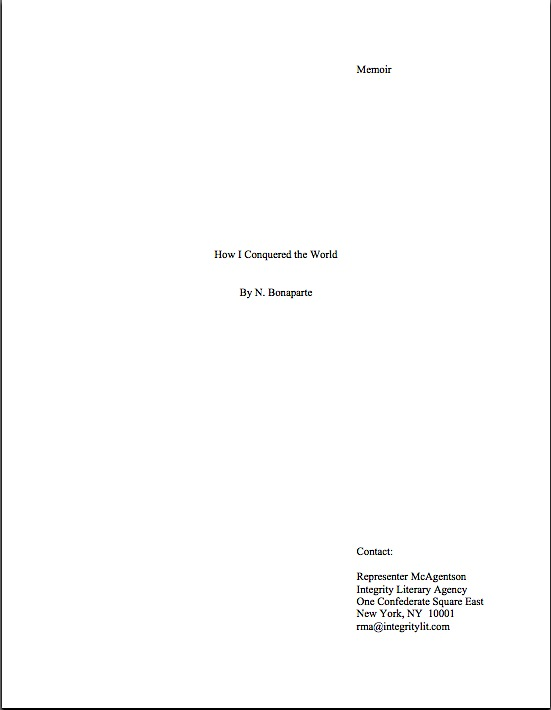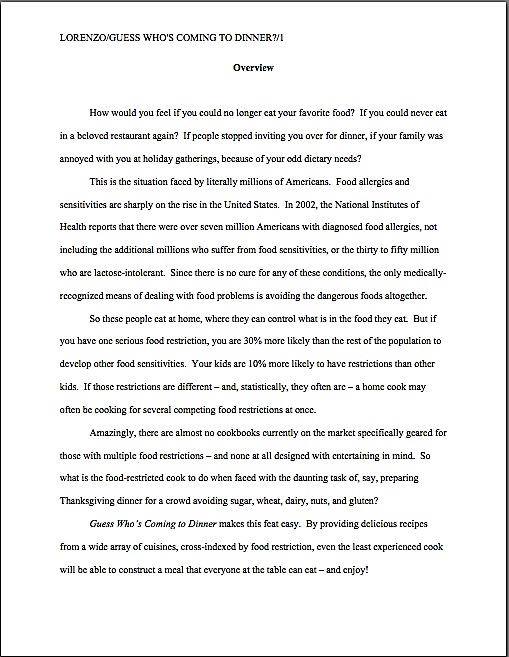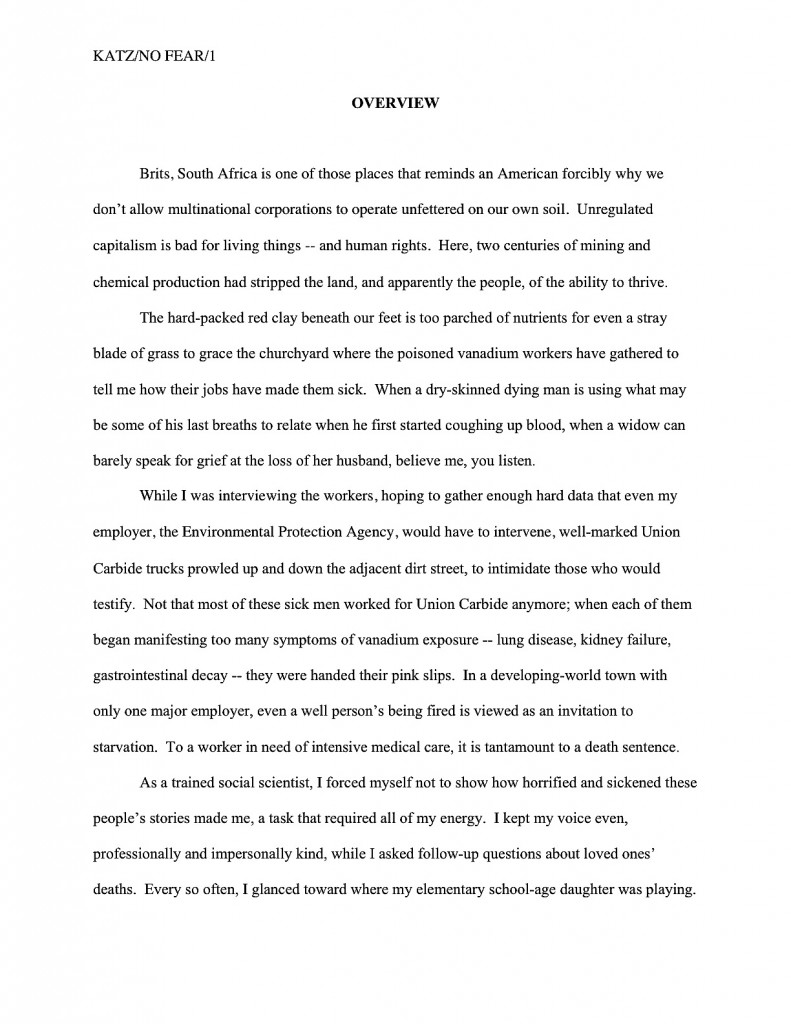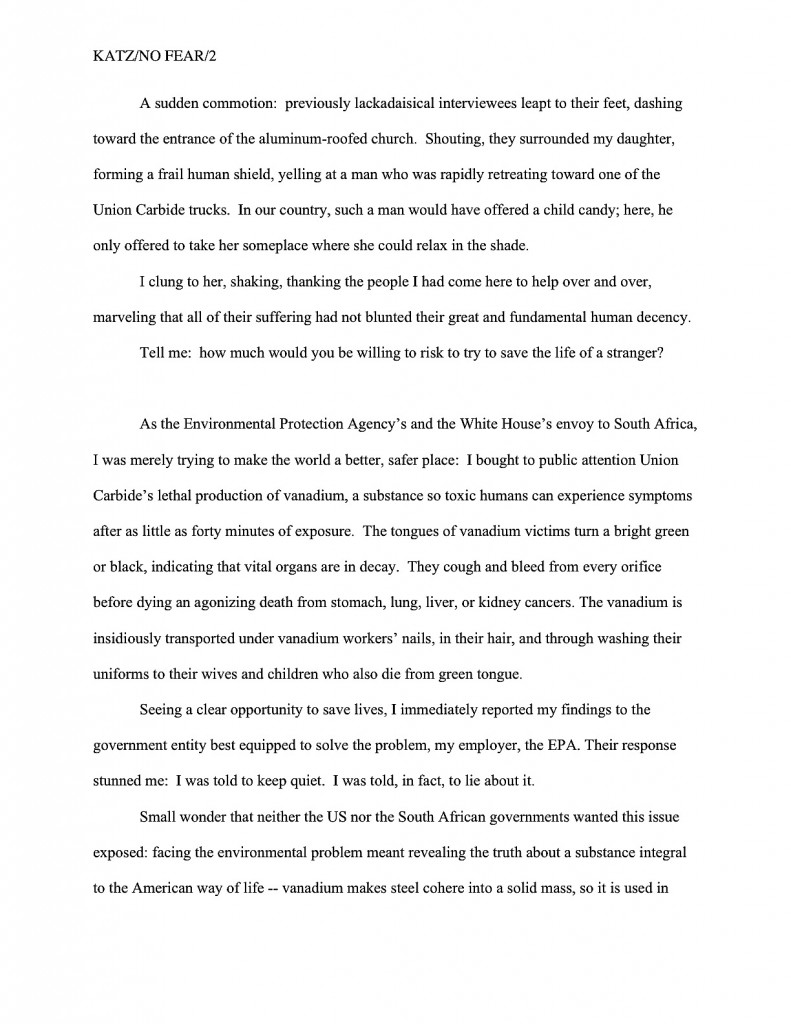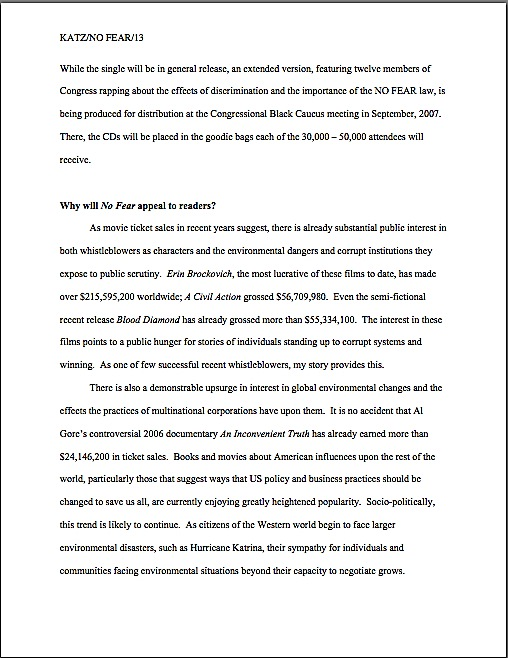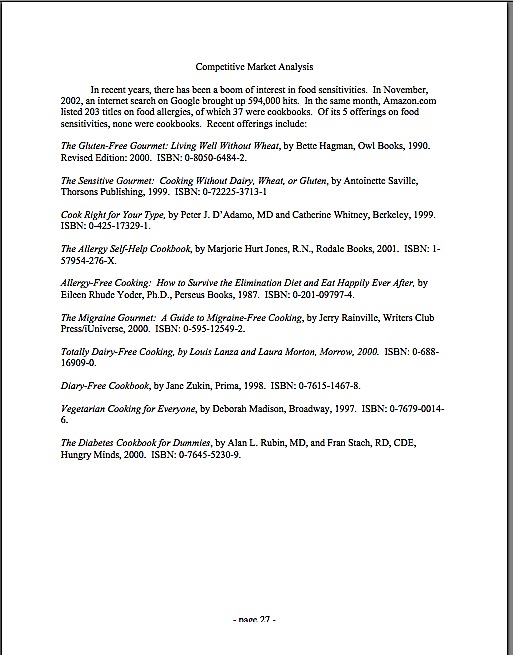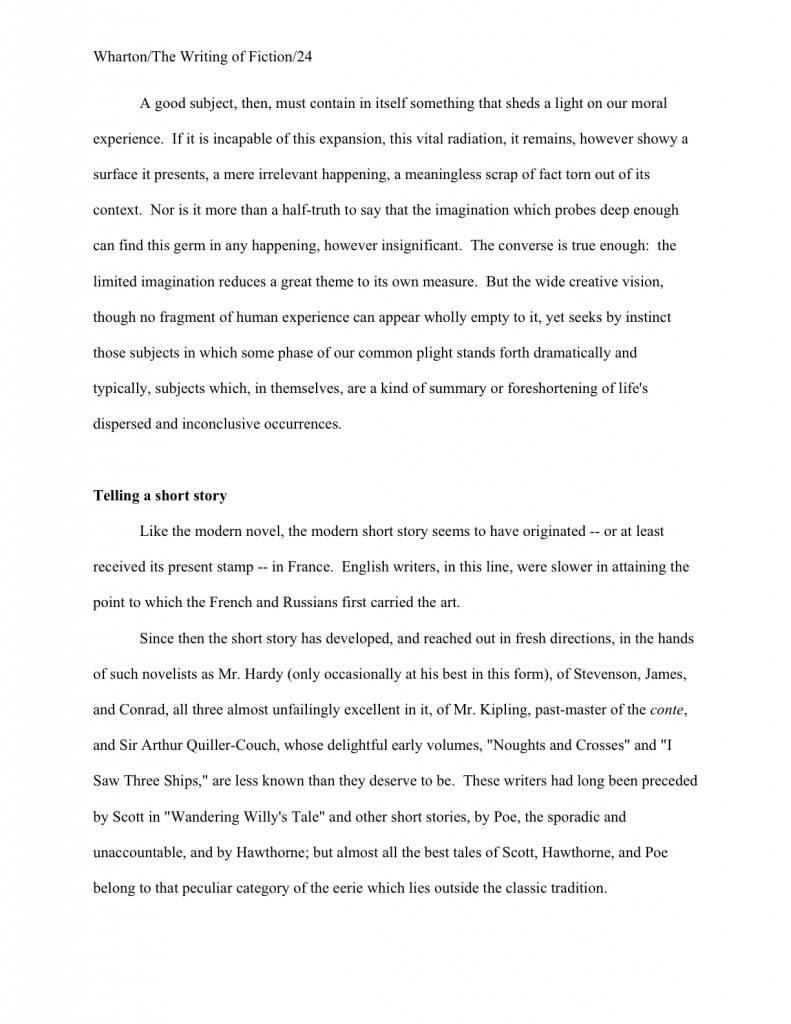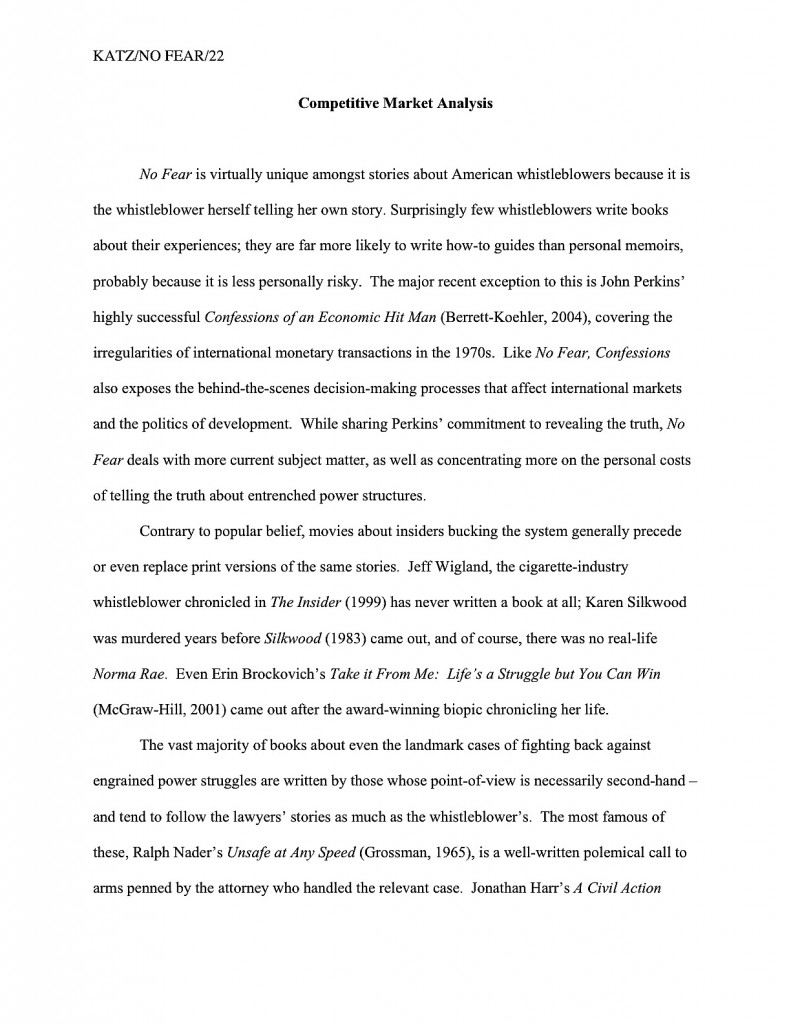Sorry about the uncharacteristically long silence, campers. Although you may have concluded that I had withdrawn, discreetly, in order to allow those of you who write literary fiction, memoir, and work that just doesn’t fit neatly into a pre-established category some extra time to prepare your entries in the Author! Author! Rings True Writing Competition — the deadline is Saturday at midnight in your time zone! — I was, alas, flat on my back.
Or rather resting at an incline, sniffling my way through one of the most annoying flus ever to work its way through the hapless citizenry of this part of the country. Normally, I can work through the haze of such contretemps, but this one was a lulu. I shall post through the weekend, though, to make up for the lost time.
Why the hurry? I know that some of you are eager to polish off — and polish up — your nonfiction book proposals.
Toward that laudable end, we have been bending our collective gaze — steely, to be sure — away from the green pastures of manuscript formatting to turn our attention to the wind-swept plains of book proposals and their proper formatting. As we have seen in our brief sojourn amid the majestic buffalo and skipping lambs, while the text of a book proposal is formatted largely in the same matter as a manuscript’s, the various headings and subheadings are often different.
Allow me to take a brief pause in the midst of all of that stirring imagery to sneeze violently.
Before we resume, did you notice how I dropped that running metaphor when it became apparent that it wasn’t working? That’s a good editing tip for any kind of writing: if it doesn’t fly, don’t force it. An even better one: while proofing you work, make sure you read all the way to the end of every sentence; it’s the only way to catch metaphors abandoned mid-stream.
Why, yes, Virginia, I do see orphaned metaphors wandering about ostensibly well-revised manuscripts. All the time. It’s one of the species markings of the Frankenstein manuscript.
As we saw last time, a professional book proposal contains a wide range of marketing materials, all written in the proposer’s best possible prose, cleverly fitted together in a manner to convince an agent or editor that the proposed book an interesting idea that will appeal to a very specific (and, ideally, well-established) target audience. Not only that, but that the proposer is the best (and, ideally, the only) conceivable person currently drawing breath to write this particular book.
Or, to put it in the language of the industry, it’s a marketable concept presented by a writer with a great platform.
Pardon me while I wrap myself up warmly — the thousand hands that just shot into the air created quite a draft. “Excuse me, Anne?” many would-be proposers inquire nervously. “You didn’t really mean that bit about the proposal written in the proposer’s best possible prose, did you? After all, the proposal is just a formality, a series of hoops through which I have to jump before a publisher buys my book, right? All that really matters is a great book concept.”
Actually, no — although I can certainly see why you might think so. Unlike novels, nonfiction books (yes, even most memoirs) are sold not because someone falls in love with the manuscript, but because a prospective author has made a convincing case in a proposal that a book that does not yet exist will be marketable to a specific audience and that s/he is the right person to write it.
Since the book concept and the argument for it are the primary sales pitch, most first-time proposers conclude that the writing in a proposal is of secondary importance. They’re absolutely wrong.
Why? Because every syllable of a book proposal is a writing sample — the only writing sample, in fact, upon which an agent or editor will base his or her conclusions about whether to pick up the book.
Picture, if you will (and you will, right?), Maury the editorial assistant, diligently scanning the day’s submissions from agents for the next promising nonfiction project. He has reason to be careful: he needs to be very, very selective about what he passes on to his boss, the editor of your dreams. (Let’s call her Ermintrude, just for giggles.) If he simply sends Ermintrude every proposal that sounds as if it might make a good book, he’s not really doing his job, is he? It’s not as though she can offer a publication contract to every interesting-sounding project, after all; at most, even an extremely busy editor might be able to take on somewhere between one and ten a year.
Yes, you read that correctly. Believe me, if Ermintrude had her druthers, she would be publishing at least 30 times that many, but her druthers are, alas, constrained by economic realities and marketing trends.
Please think about that, if were planning to toss together your book proposals over the next long weekend, or stuff them into the mailbox without running the text by another literate human being not already familiar with your book’s concept — or, sacre bleu! if you have already sent off a New Year’s resolution-fueled submission packet. Even though it has historically been quite a bit easier to land an agent and sell a first nonfiction book than a debut novel, the competition is still extremely fierce.
So when you see an agency’s submission guidelines seemingly casually asking nonfiction writers to query with proposal, this is not a requirement to approach lightly. The Millicents who screen those proposals for agents are expecting not a thrown-together, paint-by-numbers, bare-minimum document; they are expecting to see a polished, professional presentation of a terrific book concept written in beautiful, clear prose.
Why set the bar that high? Let’s wend our way back to Maury’s cubicle to find out.
It’s Maury’s job to prevent Ermintrude’s desk from becoming so over-stacked with proposals that she can’t find her phone. That means, in practice, that he’s going to weed out any proposal that doesn’t sound interesting right off the bat. He’s also going to reject those that don’t have a clearly-defined concept — which, in a screener’s world, means one that’s both grabbed his attention instantly and is comprehensible within the first few pages of the proposal — as well as those that either don’t define their target market well or do not strike him as likely to appeal to the readers already buying such books. Not to mention those that don’t seem to have a well laid-out marketing plan or chapters likely to deliver fully upon the premise of the proposal, or those proposed by writers who haven’t made a good case for their platforms to write the book.
That, frankly, is most of ‘em. I hate to be blunt about it, but because the book proposal is such a widely misunderstood marketing tool, Maury sees a whole lot of rambling proposals. And rambling, unprofessional proposals are most of what Millicent sees on a weekly basis.
In both cases, the response is the same: “Next!” Unfortunately, due to the sheer volume of submissions, it’s likely to be “Next!” for quite a few well-written ones, too.
Why, you cry in tones of anguish? Let’s be generous and assume that Maury’s had an unusually strong selection of proposals tumble onto his desk this week: out of 300, 10 are genuinely fascinating ideas for books aimed for a well-established audience.
He is facing a dilemma, right? Obviously, he can’t possibly pass them all along to his boss — remember, 10 is Ermintrude’s entire year’s allotment of books, even if she works nights, weekends, and funds the last two herself, and this is only the first week of the year. So how does he decide which one or two to send across the hall to her?
That’s right: the ones where the writing in the first few pages screams, “Excuse me, but had you noticed that there’s some talent here?”
Yes, I did indeed say the first few pages; as with a novel, if the opening doesn’t shine, a professional reader is unlikely to read on.
Don’t pout — this information is potentially empowering, because it can steer a nonfiction writer toward specific, helpful revisions. If a literate person like Maury can’t tell Ermintrude what the book is about and why you’re the best person on earth to write it by the time he is halfway through page 4, you might want to think about some serious revision. And if he doesn’t positively long to read the book by the middle of page 2, run, don’t walk, back to the drawing board to work on your prose and presentation.
Now that I’ve scared the living daylights out of you, let’s review the constituent parts of the book proposal — at least, the ones we have covered so far:
1. The title page
2. The overview, a comprehensive document that leaves Maury with no doubt whatsoever about how to answer the following questions:
(a) What is the proposed book will be about, and why are you the single best being currently possessing an operational circulatory system and fingers to write about it?
(b) What is the central question or problem of the book? Why the topic is important, and to whom?
(c) Why is this book needed now, as opposed to any other time in literary history?
(d) Who is the target audience for this book?
(e) Why will this book appeal to the target audience as no book currently on the market does?
(f) How will your platform enable you to reach this target audience better than anyone else who might even think about writing this book?
(g) How strong a writer are you, and is this voice appropriate to the proposed book’s subject matter and target audience?
Okay, okay, so I kind of slipped that last one up the back staircase, but it’s an important question to consider when evaluating whether your book proposal is strong enough to head out the door. Let’s face it: most book proposals are very, very dry. That makes some sense, given that for even the most enthusiastic book proposer, comparing books currently on the market and talking about methods for reaching a target audience are not inherently exciting topics.
As a result, many a book proposal reads like a book report: all of the necessary parts are there, but the writing is perfunctory and, well, dull. Quite apart from the very real risk of boring Maury and Millicent — who, after all, read quite a few proposals in any given day, if their bosses handle nonfiction — a just-the-facts-ma’am proposal runs another risk: conveying the impression that the book being proposed will be sketchily or uncompellingly written as well.
But this is a marketing document, right? Why not use those pages to give Millicent and Maury a strong foretaste of what the book will be like? Or, to phrase it as an axiom: it’s a great asset to a book proposal if it is written in the same voice (and with the same vocabulary) as the eventual book.
Especially if you can do it excitingly within the first few paragraphs of the proposal. As we discussed last time, a fantastic way to establish authorial voice and interest in the subject matter is to start the proposal with a vividly illustrative anecdote or other method of direct appeal to the reader’s reason and emotions.
Opening with personality-free marketing material tends not to grab Maury’s attention anywhere near as well. Unless you would rather try to thrill him with a hook focused upon last year’s sales statistics?
3. The competitive market analysis
This section, as I hope you will recall from last time, consists of a brief examination of similar books that have come out within the last five years, accompanied in each case by an explanation of how the book being proposed will serve the shared target audience’s needs in a different and/or better manner. Not intended to be an exhaustive list, the competitive market analysis uses the publishing successes of similar books in order to make a case that there is a demonstrable already-existing audience for this book.
Sound familiar? It should: here is where the proposer proves the contentions he made in the overview. Preferably, with hard data.
Which of the many, many contentions, you ask, and how does talking about one’s competition prove them? Well, for starters, who the target audience is for your book?
Answer: the readers who have already bought the books listed in the competitive market analysis. The implicit logic: if those books sold well, that means these people buy a lot of books — and might be eager to buy more.
Remember, this should not be a list, but a compare-and-contrast essay, presented in standard format. The essay format is actually to your advantage: while you’re comparing and contrasting, you can demonstrate how your book is different and better than what’s already on the market — and yes, Virginia, that can (and should) be done without running down the competition, as long as you’re specific.
Think about it: if you mention the best points of the other books and can still make the case that your proposed volume will either do what they do, only more effectively (do you have a stronger platform than another author, for instance, or is the other book outdated now?) and/or not in the same way (what does your take on the subject offer that those other books do not?), your book is going to end up looking better by contrast than if you merely say that everything else is terrible.
Trust me on this one. If you can’t say anything nice about a particular comparable book, consider instead contrasting yours to one that you can praise with a straight face.
Some of you have had your hands raised since last time, have you not? “But Anne,” proposers everywhere exclaim, rubbing circulation back into their exhausted arms, “one of the reasons I wanted to write my book in the first place is that there isn’t another recent book on the subject. So how do I come up with a list for the competitive market analysis? Make things up?”
Glad you asked, patient arm-raisers — there’s a pro’s trick for handling this. But first, indulge me by participating in a short exercise in understanding your book’s appeal.
(a) Equip yourself with some scratch paper (the back sides of earlier drafts of your proposal, perhaps?) and a comfortable pen.
I would suggest selecting a comfortable chair, too, because you’re not to budge until you come up with a list to take with you to a bookstore.
(b) Brainstorm five different ways to describe your proposed book.
And I’m not talking about descriptors like well-written, either — describe your book the way a clerk in a bookstore might to a potential reader. Is it a memoir about your childhood spent following your mother as she worked as a gold-panner in the Sierra Nevada mountains in the 1920s? Then your list might run like this: memoir of 10-year-old girl, treasure-hunting, mountain living, 1920s, and women in unusual occupations.
Starting to get the hang of this? Let’s try another one: the proposer of a self-help book aimed at mothers with children suffering from life-threatening illnesses, illustrated with abundant real-life case studies might generate a list like this: self-help for mothers, terminal illness, medical memoir, parenting books, dealing with the prospect of death, and mourning.
Got your list firmly in hand? Good. Now…
(c) Hie yourself and your list hence to the nearest well-stocked brick-and-mortar bookstore.
Seriously, what I’m about to suggest is considerably harder to pull off online.
Standing in the store, feeling silly for carrying that list around? Excellent. Ready, set…
(d) Don’t find a book like yours. Instead find a couple of books that match one — and only one — descriptor on your list.
Yes, really: while it would be terrific to discover a book similar enough to yours that you can perform a direct point-by-point comparison, it’s actually not necessary for your book proposal. Instead, go to the first descriptor on your list and find several books that could be described with the same term.
Proposing a memoir, for instance? Stand in front of the memoir section and keep pulling books off the shelves until you discover a few that are similar in some way to yours — not identical, but exhibiting some subject matter or approach overlap.
It can be a very, very small way. Is it a childhood memoir by someone who grew up in the same part of the country as you did? Start taking notes. Is another by a dog-lover, while two chapters of your proposed book cover your relationship with beloved Spot? Sounds close enough to me. If your memoir set in the mid-1960s, find a few good nonfiction titles that cover similar aspects of the period.
After you’ve ferreted out a few useful titles, move on to the next descriptor on your list. If your cookbook is for vegans, how about including as few of the well put-together vegetarian cookbooks out recently? Not too hard to see how your book would be different and better for vegan readers than those, right? If your memoir features a chapter on the day your big brother ran away to join the army, wouldn’t it make sense to grab a couple of military memoirs, to check which dealt with family issues?
And so forth. The goal here is not necessarily to find a dozen books exactly like yours; it’s also perfectly permissible to devote a paragraph or two each to several different book categories into which your unique book might conceivably fall. Chances are, you’re going to find more books than you actually need. When in doubt, go with the ones that sold better and/or were released by major U.S. publishers; while a book from a smaller press, or one that sold only a few hundred copies, might actually be a better fit, it will provide less evidence to Millicent and her boss that there are editors at major houses already eager to buy books like yours.
Once you have come up with a dozen or so titles, you are ready to begin writing your competitive market analysis.
(e) Instead of trying to draw overall comparisons between your proposed book and each of the titles on your list, focus instead on the single point of overlap — and show how your book will address that particular point in a better way or with a different take than the already-published book.
Try not to fall into the trap of hyper-literalism here. If your book is about being raised by bears, and you are contrasting it with a memoir about being raised by wolves, you’re not going to get a lot of mileage out of saying, WOLF CHILD completely ignores the problems of the bear-raised human, so my book, CUB SCOUT, will appeal to the wild-animal/family market more.
Well, of course a book about wolves would not address bears; it’s not reasonable to expect otherwise. By concentrating upon more positive points of comparison, it’s easier to make your book’s legitimate selling points clear: like the best-selling WOLF CHILD, CUB SCOUT is a first-person account of being raised by wild animals. Wolves, however, have a long history of taking in abandoned human children; I was the first child in the Cascade region ever to have spent significant time with the grizzly without ending up a corpse.
See the difference? Again, the point here is not to convey the impression that you consider every similar book out there your competition, and therefore its author an enemy to be discredited. By demonstrating that there is already a market for books that match your five descriptors — as there must be, according to industry logic, or those recently-released books would not be on the shelves* — the implication is that past readers of each of those types of book might arguably be interested in yours.
(* Don’t waste your energies questioning this quite debatable assumption; you’ve got a proposal to write.)
Everyone clear now on the purpose and proper formatting of the competitive market analysis? If not, now would be a fabulous time to shout out a question or two. While I’m waiting with my hand cupped around my ear, let’s move on to the next section.
4. The annotated table of contents
It’s not surprising that this section falls flat in so many proposals; many, if not most, proposers don’t seem to understand the purpose of the annotated table of contents. Many, many proposers labor under the misconception that what agents and editors expect to see in this section is simply a list of chapter titles, accompanied by guesstimated page numbers. Many, many other proposers assume that they should devote a page to each chapter.
Or even several. For my sins, I’ve seen proposal drafts with 20-page annotated tables of contents. Believe me, Maury was far from pleased.
Avoid that dreadful fate in yours; keep it brief, but substantial. One to two paragraphs on each envisioned chapter is about right — remembering, of course, that everything in a book proposal is a writing sample. At the risk of repeating myself, show, don’t tell.
How does one pull that off when covering so much territory in so short a space as a paragraph or two? The same way you came up with the descriptive paragraph of your query letter, ideally: instead of trying to summarize everything that happens in a chapter in general terms, pick a particularly interesting scene or argument and present it in vivid terms.
In other words: be specific, not general. If you can possibly manage it, try to include details that Maury is unlikely to see in another proposal.
Again, you’re going to want to write this as narrative, not a list, but this section of the proposal has some odd conventions, ones that tend to come as a surprise to most first-time proposers. To see them in action, let’s take a gander at out example from the other day. As always, if you’re having trouble reading the specifics, try holding down the COMMAND key and pressing + to enlarge the image.
Notice anything here that might offend the muses of standard format, were this a novel? How about the fact that the title of the book appears at the top of the page, as if Annotated Table of Contents were a subtitle? Or the phenomenon of adding a section break between each chapter’s description? Or that the descriptions were in the present tense, like a synopsis?
Actually, there’s a pretty good explanation for the first two of these conventions. (Sorry; you’re on your own for the last.) Remember how I mentioned earlier in this sub-series that unlike a manuscript, book proposals are often broken up into their constituent parts on the reading end, so folks working in different departments at publishing houses may take a gander at ‘em?
Titling the annotated table of contents renders it easier to get those pages back into the right proposal. Skipping a line between chapters makes it simpler for an editor to find the chapter she is seeking when she’s in an editorial committee meeting or arguing with your agent about what will be in the final book.
Oh, you weren’t aware that editors often ask writers to change the proposed chapters? Happens all the time, so gird your loins, nonfiction-proposers, and prepare to play ball.
If the very notion of being asked to remove your meticulously-researched chapter on steam engines (in order to replace it with a similar section on cotton gins, about which the acquiring editor did her undergraduate thesis at Columbia) or to reduce your seven intended chapters on your life prior to the age of 17 into as many paragraphs (so you may concentrate at greater length on your four subsequent years as a sword-swallower) causes your skin crawl in revulsion, do not despair. You actually do have a means of making sure your favorite chapters pass the editorial test: write about them brilliantly in the annotated table of contents.
Seriously, if ever there was a time to show, not tell, this is it. The more vividly-depicted specifics you can work into those chapter descriptions, the better. Think of it as an opportunity to let Maury and Millicent know what a great storyteller you are.
Why is that especially important in the annotated table of contents, you ask? The vast majority of first proposals just summarize what’s going to be in each chapter, instead of using each chapter to tell a compelling separate story. Because you’re selling your talents as a writer here, as well as the subject matter of the book, that’s a serious faux pas.
If you just muttered to yourself, “Hey, might this not be an amazingly good place to demonstrate just how my book is different and better than the ones I was discussing in the last section?” congratulations — you’re starting to think like a pro. Especially in a memoir or cookbook proposal, this is a great spot to work in mention of how your book is uniquely yours:

If you eagerly shot your hand into the air as you glanced over that last example, eager to point out that this example was formatted slightly differently than the one before it, congratulations again — your eye is sharpening. The last version is in the version my agency prefers; the desire for bolding and all caps is not universal.
Just thought you might like to see both. And if I haven’t said it often enough yet: if the agent of your dreams wants you to format your proposal differently from what I advise here — in, for example, clearly laid-out guidelines on the agency’s website — for heaven’s sake, give him what he wants. In the book proposal as well as the manuscript, the average agent is looking for evidence that a potential client can follow directions.
Don’t see why that would be an essential quality in a book-proposing client? Okay, let me ask you: if you were an agent, would you rather represent the writer who says, “Lose my Chapter 13 and dumb down the book’s vocabulary to an 8th-grade reading level? Can do, Ermintrude!” or the one who flies into an uncontrollable fury and comes weeping to the agent, demanding to cancel the book contract?
Oh, come on — you didn’t really hesitate over that choice as long as you pretended, did you?
I’ll be wrapping up book proposal formatting next time — literally: I’ll be talking about the folders that encase them. Until we meet again in that happy, not-too-distant future, keep up the good work!



